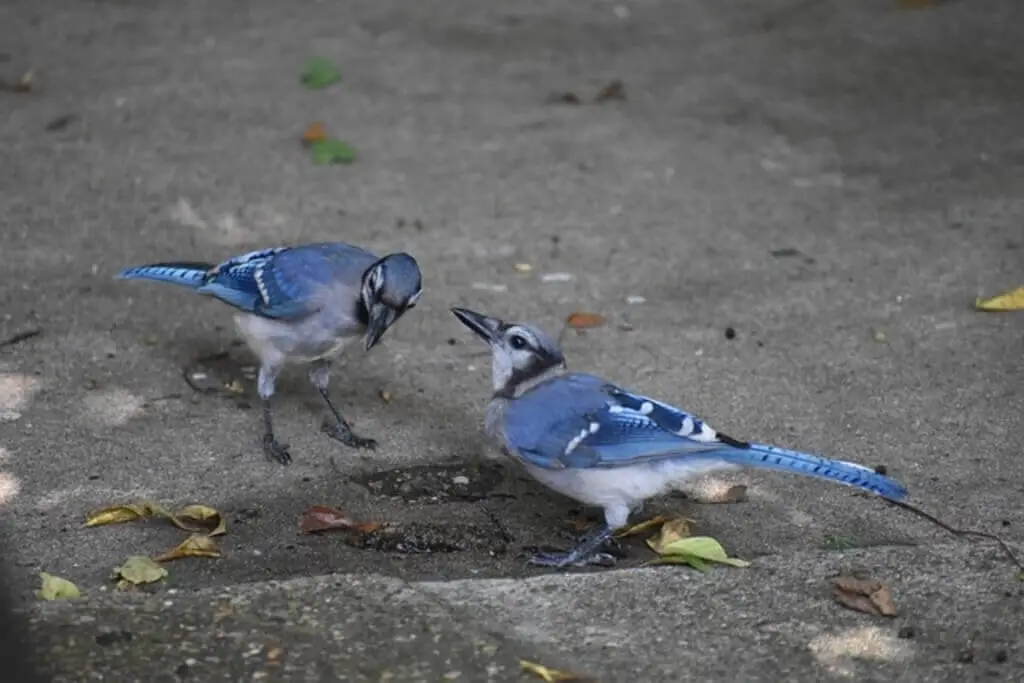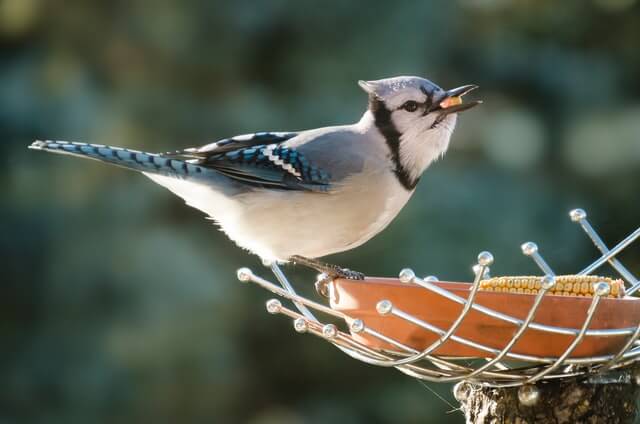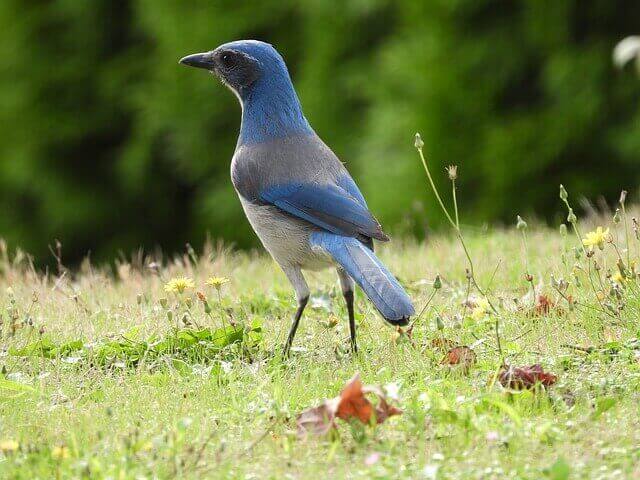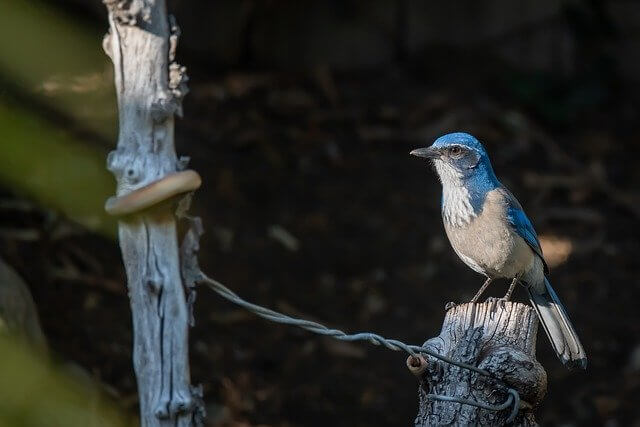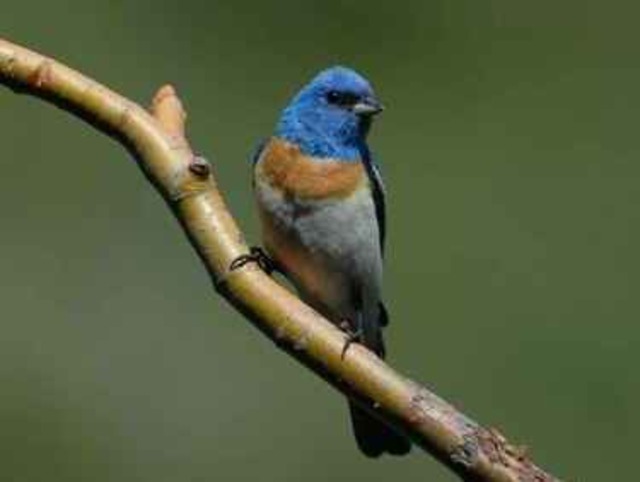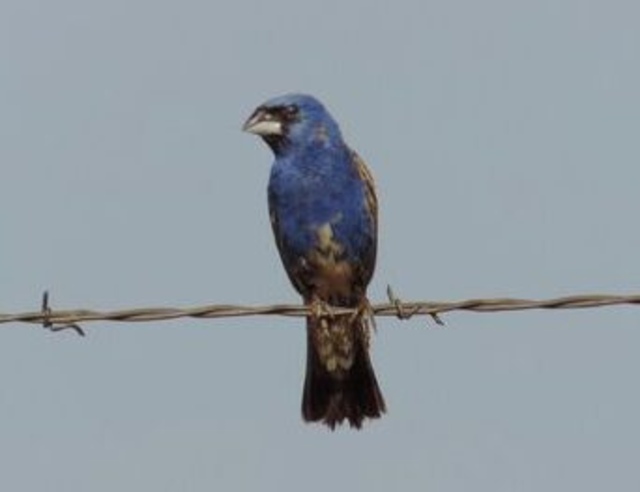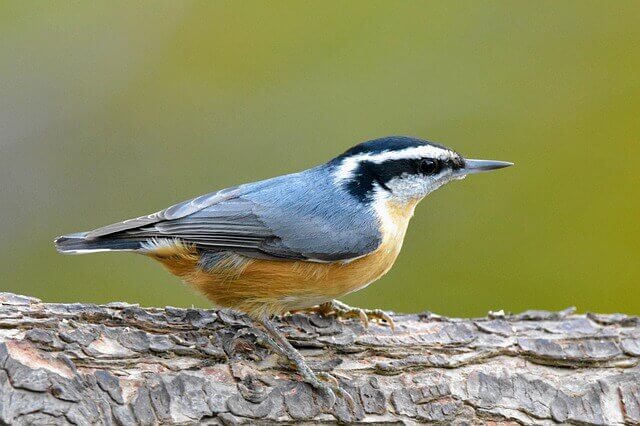Your backyard can be a haven for some of the most stunning blue birds. From vibrant jays to delicate bluebirds, these avian wonders add a splash of color and a sense of wonder to any garden. In this post, we’ll explore 11 beautiful blue birds you can look for in your backyard, highlighting their unique features and the joy they bring to birdwatchers.
Table of Contents
- 1 Types of Blue Backyard Birds
- 2 Frequently Asked Questions
- 2.1 What is the name of a small bird that is all blue?
- 2.2 What kind of bird is bright blue?
- 2.3 What kind of bird is light blue?
- 2.4 What is a blue bird that looks like a sparrow?
- 2.5 Is there another bird that looks like a blue jay?
- 2.6 What are the large blue birds called?
- 2.7 What bird looks like a bluebird but is bigger?
- 2.8 Is there a blue cardinal?
- 2.9 Are bluebirds friendly?
- 3 Author
Types of Blue Backyard Birds
Blue Jay
The Blue Jay, a member of the crow family, is a common bird found throughout North America. The blue jay is easily recognized by its blue plumage and white chest. Males and females look similar, although the male is usually slightly larger. The blue jay has a large range, spanning from Canada to Mexico. In the United States, they are widely found in the east and central states.
Blue jays prefer habitats with trees, but can also be found in open areas such as parks and gardens. The diet of the blue jay consists mostly of insects and nuts. They will also eat berries, fruits, and other small animals such as lizards and mice. During the winter months, when food is scarce, blue jays will often visit bird feeders to supplement their diet.
Related:
- 15 Best Bird Feeders For Blue Jays (Tried & Tested 2022)
- What Attracts Blue Jays to your Yard?(Expert Tips)
- What Does A Blue Jay Eat? (10 Favorite Foods Revealed!)
Steller’s Jay
Steller’s jays are found in coniferous forests across North America. They are common in the western United States and Canada, but can also be found in the Great Lakes region and the eastern United States. Steller’s jays prefer open woodlands and forest edges, but can also be found in urban areas. The diet of Steller’s jays consists mainly of insects, acorns, and other nuts.
They will also eat berries, fruits, and seeds. During the winter months, when food is scarce, they will often cache food to eat later. Steller’s jays are interesting birds because of their wide range and their adaptability to different habitats. They are also known for their curious nature and their loud calls.
Related: How to Attract Steller’s Jay to your Yard – Expert Tips!
California Scrub-Jay
The California Scrub-jay is a relatively small bird with a blue body and gray wings. The head of the California scrub-jay is blue, and the tail is long and white. The males and females are similar in appearance, but the males are typically slightly larger than the females.
The California scrub-jay is a species of bird that is found in the western United States. The California scrub-jay’s range extends from southern Oregon to central California. The habitat of the California scrub-jay includes chaparral, woodlands, and suburban areas. The diet of the California scrub-jay consists of insects, nuts, and berries.
Florida Scrub-Jay
The Florida Scrub-Jay is a small bird that is found in the scrublands of central and southern Florida. They are very closely related to the Blue Jay, and they have a similar coloring. The Florida Scrub-Jay is mostly blue with a white chest and belly. They have a long tail that is tipped with black. The Florida Scrub-Jay has a very limited range. They are only found in the scrublands of central and southern Florida.
This habitat is characterized by low, dense vegetation and sandy soil. The Florida Scrub-Jay depends on this habitat for food and shelter. The diet of the Florida Scrub-Jay consists mostly of insects. Additionally, they will most likely eat berries, nuts, and other forms of small fruit. The Florida Scrub-Jay is an important part of the ecosystem because they help to control the population of insects.
Mountain Bluebird
Due to their sheer beauty, mountain bluebirds are among one of the most beautiful birds in North America. They are very easy to spot due to their bright plumage. Males and females look almost identical, although males are generally slightly larger. Mountain bluebirds are found in mountainous areas of western North America.
Their habitat includes open areas with little or no trees, such as meadows, foothills, and sagebrush flats. They nest in cavities in cliffs or trees, and sometimes use man-made nest boxes. Mountain bluebirds like to eat beetles, grasshoppers, and caterpillars. In winter, they may eat berries and seeds.
Related:
- 9 Best Birdhouses for Bluebirds (Top Picks for 2022)
- 15 Best Blue Bird Art Pieces (That Will Make You Smile!)
Eastern Bluebird
The Eastern Bluebird is a small bird with a round body shape, and a short tail. Males have bright blue feathers on their backs and wings, while females are more subdued in color. These birds are found in open woodlands and fields in the eastern United States. They build nests in tree cavities or man-made nest boxes. Their diet typically consists of insects and, berries, and fruits.
Eastern Bluebirds are cavity nesters, meaning they make their nests in holes in trees or man-made nest boxes. These birds usually lay 4-5 eggs per clutch and will have 2-3 broods per year. The young birds leave the nest after about 3 weeks, but will continue to be fed by their parents for several weeks after that.
Related:
- 68 Fun Facts About Eastern Bluebirds (You Didn’t Know!)
- How to Attract Eastern Bluebirds to your Yard (Explained)
Western Bluebird
The Western Bluebird is a medium-sized songbird with a striking blue plumage. These birds are found in open woodlands and scrublands from Alaska to California. Their diet consists mainly of insects, although they will also eat berries and other fruits. The Western Bluebird is a beautiful bird that is easily recognizable by its blue plumage.
These birds are found in open woodlands and scrublands from Alaska to California. Their diet consists mainly of insects, although they will also eat berries and other fruits. The Western Bluebird is an important part of the ecosystem and plays an important role in controlling the insect population.
Indigo Bunting
The Indigo Bunting is a small, seed-eating bird. The male has dark blue feathers, while the female usually has duller blue plumage. These birds can be found in open woodlands and fields in the eastern United States. They are shy birds that are hard to spot. The Indigo Bunting’s diet consists mainly of seeds and insects. In the summer months, they eat mostly insects.
In the winter, they eat mainly seeds from trees and plants. These birds also like to eat berries and fruits. The Indigo Bunting breeds in the spring and summer months. The female typically lays 3–5 eggs in a nest composed of grass, twigs, and leaves. The male helps cares for the eggs and also the young chicks.
Related: How to Attract Indigo Bunting to your Yard? Expert Tips!
Lazuli Bunting
The Lazuli Bunting is a North American songbird, is an American ornithology bird species which has been recorded since the early eighteen hundreds. Among ornithologists and collectors, the Lazuli Bunting has long been a favorite for its prominent blue and silver color scheme. Allegedly, it was also used by ancient Egyptians on their stone carvings to depict feathered species.
The best time to see this particular bird is in the spring, when the weather warms. When its temperature is pleasant, the bunting travels by following the same route as any other member of its species. During the spring, this particular bunting returns to its natal territory and then migrates south for the winter months. These birds primarily consume insects or plant seeds.
Blue Grosbeak
The Blue Grosbeak (Passerina caerulea) is a medium-sized songbird with stunning blue plumage. These birds are found in North and South America, typically in open woodlands near sources of water. Their diet consists mostly of insects, but they will also eat fruits and seeds. The blue grosbeak has a large range, spanning from central Mexico to southern Canada.
These birds are most commonly found in the eastern United States, but have been seen as far west as California. Habitat loss due to human activity is a major threat to the blue grosbeak population. Despite their declining numbers, the blue grosbeak is still a relatively common bird species. These beautiful creatures are a joy to watch and listen to, and we hope that their population will rebound in the years to come.
Related: 40 Blue Grosbeak Interesting Facts (Photos, ID & Info!)
Red-breasted Nuthatch
The Red-breasted Nuthatch is a small bird with a black cap, white cheeks, and a black line running across the eyes. It has a reddish breast and belly, and blue-gray wings and tail. The Red-breasted Nuthatch is found in coniferous forests across much of Canada and the northern United States. It is a year-round resident in some areas, but may move south in winter.
The Red-breasted Nuthatch feeds on insects, spiders, and seeds. It often climbs headfirst down tree trunks in search of food. The Red-breasted Nuthatch nests in cavities in trees, often using abandoned woodpecker holes. It may also use nest boxes.
Related: How to Attract Nuthatches to your Backyard? Expert Tips!
Frequently Asked Questions
What is the name of a small bird that is all blue?
The Indigo Bunting is a small, blue-colored bird that is found in North America. The male Indigo Bunting is particularly known for its vibrant blue plumage, which makes it a popular choice for bird-watchers. The female Indigo Bunting is less brightly colored, but still has a beautiful blue hue. These birds are relatively small, measuring only about 5-6 inches in length.
What kind of bird is bright blue?
The indigo bunting and the lazuli bunting are both blue birds. The indigo bunting is a little brighter blue than the lazuli bunting. The indigo bunting is found in North America and the lazuli bunting is found in western North America.
What kind of bird is light blue?
There are actually several types of birds that are light blue. These include the Eastern Bluebird, Western Bluebird, Mountain Bluebird, Florida Scrub-jay, and Indigo Bunting. Each of these birds has its own unique pattern and coloration, making them easy to identify in the wild. While they may all be different shades of blue, they are all equally stunning to look at.
What is a blue bird that looks like a sparrow?
The blue bird resembling a small sparrow is known as an Indigo Bunting. The Indigo Bunting is a small songbird that is native to the United States and Canada. The male Indigo Bunting is a beautiful blue color, while the female is a dull brown. The bird gets its name from the blue color of the male’s plumage.
Is there another bird that looks like a blue jay?
There are actually several different kinds of birds that look strikingly similar to blue jays. These include the Steller’s Jay, California Scrub-Jay, Florida Scrub-Jay, Woodhouse Scrub-Jay, Pinyon Jay, Mexican Jay, and the Mountain Bluebird. Though they may vary slightly in coloration and size, all of these birds share the same overall appearance as blue jays.
What are the large blue birds called?
The Great Blue Heron is a large blue bird that can be found in North America. It is the largest species in the heron family. The Great Blue Heron is a wading bird and can be found near bodies of water such as lakes, ponds, and rivers. It feeds on fish, frogs, snakes, and small mammals. The Great Blue Heron is a protected species and is not hunted.
What bird looks like a bluebird but is bigger?
In North America, the two scrub-jay species most often confused with bluebirds are the California Scrub-jay and Florida Scrub-jay. Both have blue upperparts, but the California Scrub-jay is more grayish overall and has a white throat and breast. The Florida Scrub-jay lacks the grayish tones and has a buffy throat and breast.
Is there a blue cardinal?
A blue cardinal does not exist. The bird you are thinking of is probably a blue jay. Cardinals are red because of the carotenoids in their diet. Carotenoids are plant pigments that are found in things like fruits and vegetables. They give Cardinals their red feathers. The blue Jay’s diet is different from the Cardinals and does not include as many carotenoids, resulting in its blue feathers. So, while a blue cardinal might be pretty, it isn’t real.
Are bluebirds friendly?
Most bluebird species are very shy around humans and will fly away if you get too close. However, there are a few species that are known to be quite friendly towards people. The most well-known of these is the eastern bluebird (Sialia sialis). This bird has been known to approach people in open areas, such as parks and gardens. It will often perch on people’s shoulders or heads, and has even been known to land on outstretched hands. It is also one of the few bird species that will readily accept food from humans.

